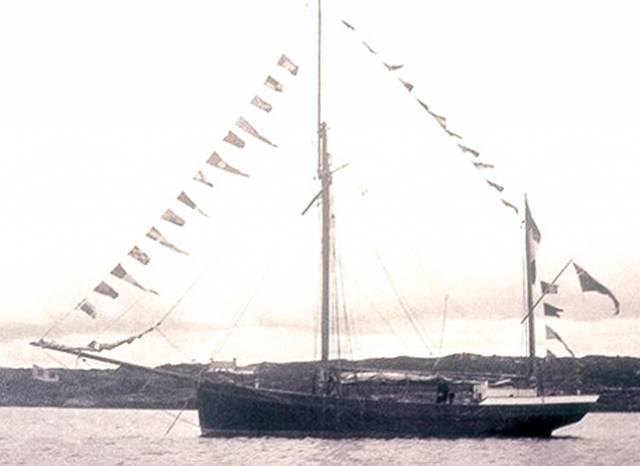When the restoration project on the 1926-built 56ft Conor O’Brien/Tom Moynihan Falkland Islands Trading Ketch got under way at two locations – Liam Hegarty’s boat-building shed in the former Cornstore at Oldcourt near Baltimore, and the Ilen Boat-building School premises in Limerick – it was expected that final jobs such as making up the rigging and creating the sails would be contracted out to specialists writes W M Nixon.
But while the plan is still in place to have the sails made in traditional style by specialist sailmakers, Gary MacMahon and his team in the Ilen Boat-building School came to the realisation that they’d made so many international contacts over the years while the restoration has been under way that, if they could just get the right people’s schedules to harmonise, then they could learn how to make up the rigging in their own workshops as part of the broader training programme.
 Conor O’Brien in 1926, when he delivered Ilen to the Falklands. He had received the order for the new ketch as a result of his visit to the Falkland Islands during his round the world voyage with the 42ft ketch Saoirse in 1923-25
Conor O’Brien in 1926, when he delivered Ilen to the Falklands. He had received the order for the new ketch as a result of his visit to the Falkland Islands during his round the world voyage with the 42ft ketch Saoirse in 1923-25
As a result, the Ilen Boat-building School became a hive of activity over the Bank Holiday Weekend and beyond, for that was the only time when noted heavy rigging experts Trevor Ross, who is originally from New Zealand, and Captain Piers Alvarez, master of the 45-metre barque-rigged tall ship Kaskelot, were both available to make their voluntary instructional contributions to the project.
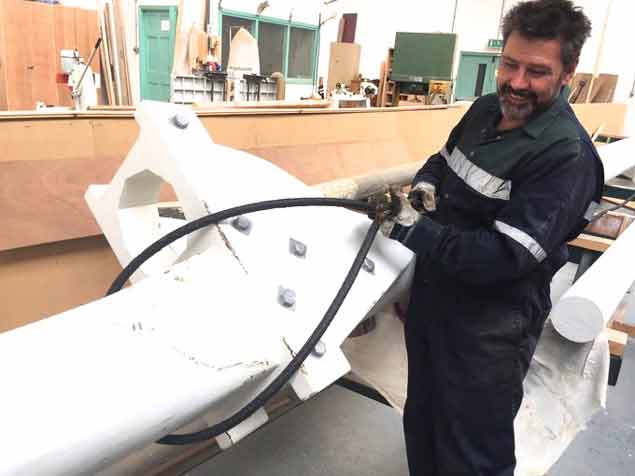 Trevor Ross with a new eye splice in the Ilen Boat-building School in Limerick. Photo: Gary MacMahon
Trevor Ross with a new eye splice in the Ilen Boat-building School in Limerick. Photo: Gary MacMahon
 The re-creation of Ilen’s rig, as developed by Trevor Ross with the late Theo Rye
The re-creation of Ilen’s rig, as developed by Trevor Ross with the late Theo Rye
Trevor Ross was professionally at sea for ten years, during which time he became fascinated with traditional rigging techniques. Though he now works ashore, his interest in traditional rigging and sail training is greater than ever - so much so that he worked with the late Theo Rye in finalizing the design of Ilen’s rig to match the original from Conor O’Brien’s day, while ensuring that it is practical in modern terms both for requirements of efficiency and safety.
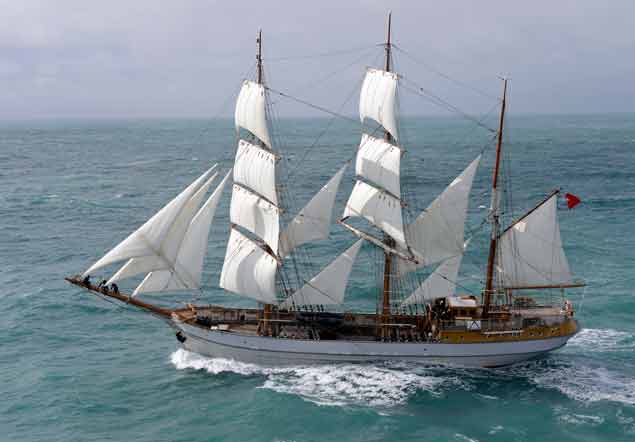 Captain Piers Alvarez’s current command is the 45-metre barque Kaskelot
Captain Piers Alvarez’s current command is the 45-metre barque Kaskelot
Piers Alvarez grew up in English cider country near the broad River Severn, but his personal horizons were far beyond apple growing. When he was 15, the captain of the famous square rigger Soren Larsen came to live in the village, which gave Piers’ father the opportunity to sign on his restless son as an Able Seaman at least for the duration of the school holidays, but the boy became hooked on the sea.
More than thirty years later, the love of seafaring and traditional ships is undimmed. Although Piers’ maritime career has also taken in tugs, superyachts and ice-classed research vessels, his current role in command of the Kaskelot perfectly chimes with his most passionate interests, and he has been fascinated by the entire Ilen project from an early stage.
So when the possibility arose of spending time in Limerick working along with his old shipmate Trevor Ross on the rigging for Ilen as a training project for the Ilen School’s intake, he readily gave up a week of his leave to teach the Ilen’s build team and future crew everything he knows, while moving a key part of the Ilen plan along the path of progress.
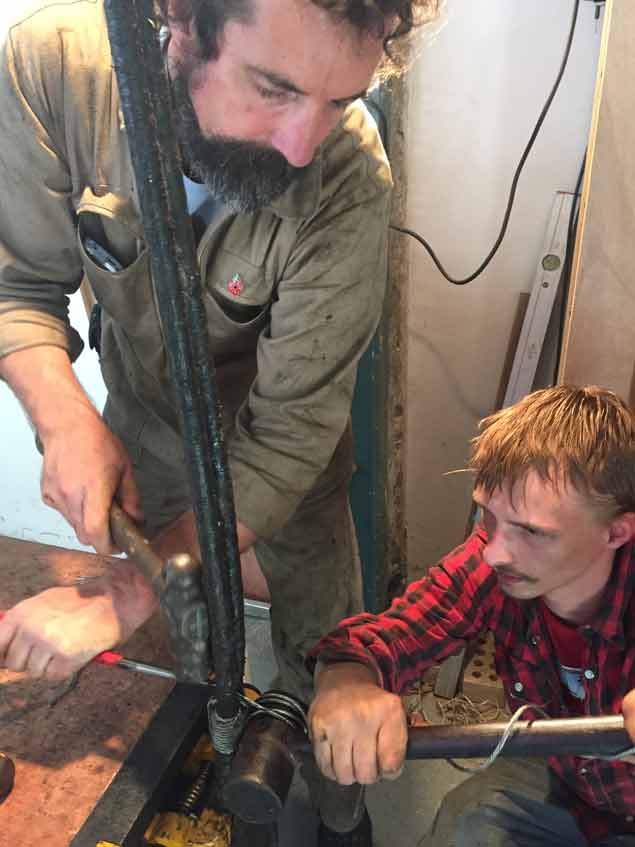 Piers Alvarez and trainee Elan Broadly busy with their work in Limerick
Piers Alvarez and trainee Elan Broadly busy with their work in Limerick
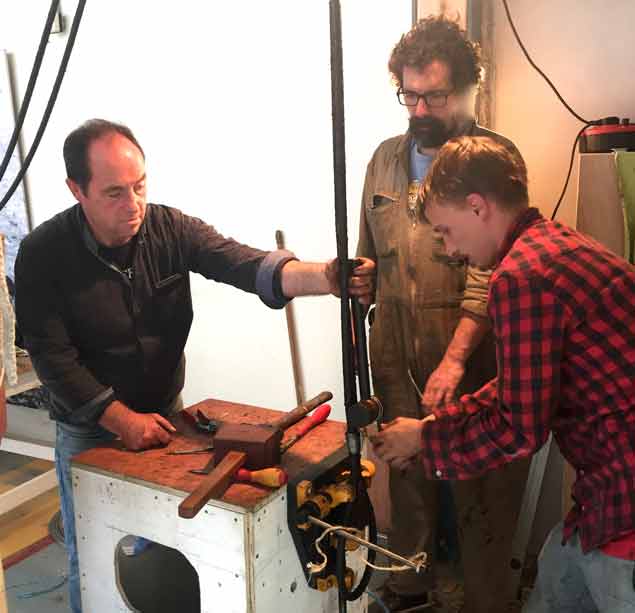 Ilen School Instructor James Madigan (left) with Piers Alvarez and Elan Broadly, immersed in their learning work while everyone else is on holiday. Photo: Gary MacMahon
Ilen School Instructor James Madigan (left) with Piers Alvarez and Elan Broadly, immersed in their learning work while everyone else is on holiday. Photo: Gary MacMahon
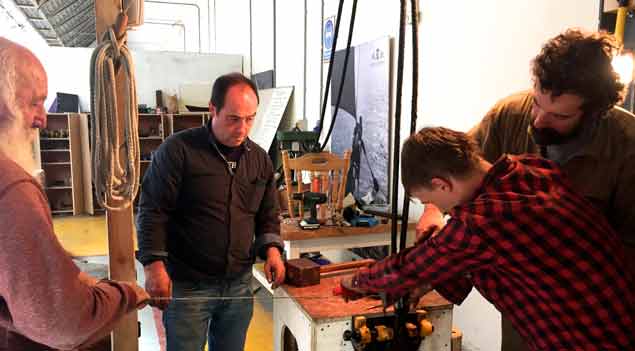 Team work. (Left to right) Liam O’Donoghue, James Madigan, and Elan Broadly on a steep learning curve with Piers Alvarez. Photo: Gary MacMahon
Team work. (Left to right) Liam O’Donoghue, James Madigan, and Elan Broadly on a steep learning curve with Piers Alvarez. Photo: Gary MacMahon
Modern amateur sailors, accustomed to today’s rigging where a terminal can be fitted in a seemingly-simple machine with the press of a button, can scarcely imagine the patient effort and skill which goes into making an eye splice in wire rigging which is of such a weight that, to most of us, it looks more like working with steel hawsers.
This is hard graft, but very rewarding in the result, and the satisfaction found in the effort expended. Much of it is done entirely by hand, but now and again that lethal multiple tool, the angle-grinder, will speed up a finishing job.
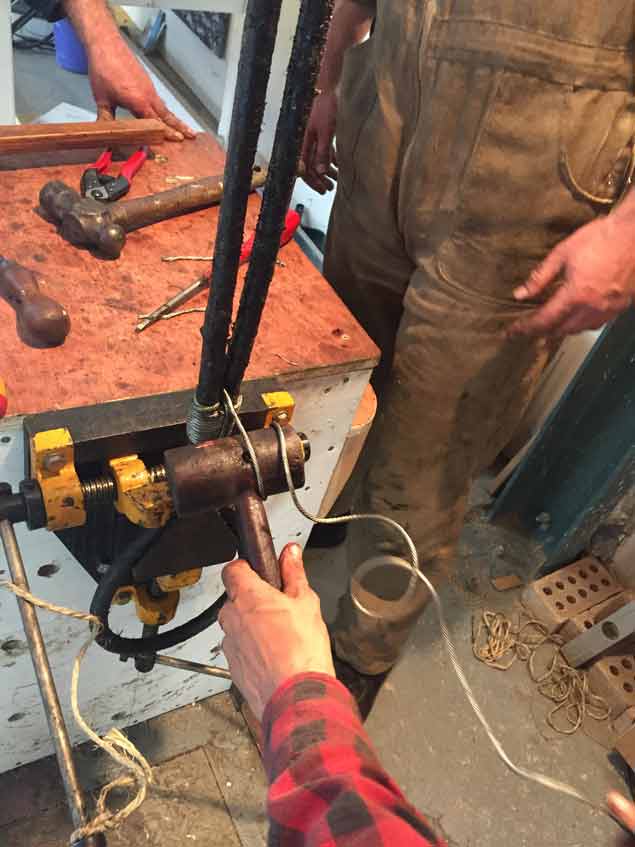 Some of the tools used in setting up traditional rigging are of very ancient origin…………….Photo: Gary MacMahon
Some of the tools used in setting up traditional rigging are of very ancient origin…………….Photo: Gary MacMahon
 ….but inevitably an angle grinder will be used at some stage, and Piers Alvarez is ace with it. Photo: Gary MacMahon
….but inevitably an angle grinder will be used at some stage, and Piers Alvarez is ace with it. Photo: Gary MacMahon
When finished, the neatly parcelled eye-spliced shrouds will fit the re-shaped mast like a glove, while at the other end, the shrouds will be tensioned by traditional lanyards through dead-eyes which have been made in Limerick from tough greenheart timber. It’s a long way from a drum of raw steel wire and a still squared hounds area to be progressed into something which will function on the massive mast in smooth partnership, providing Ilen with her sailing power. And in Limerick over the holiday week, it provided an unusually satisfying way to learn something new and useful.
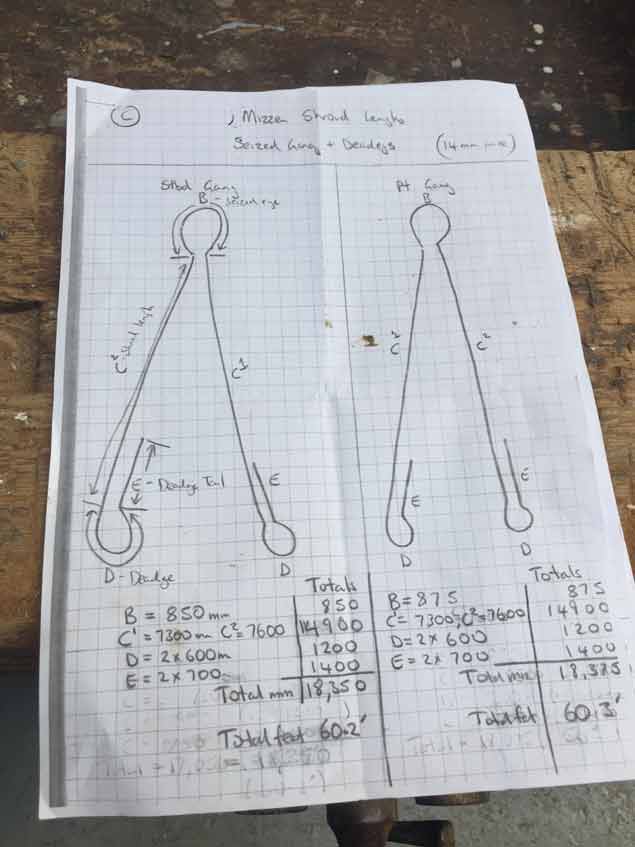 With the simplest of work drawings, an experienced rigger can turn a piece of hefty steel wire into a serviceable piece of rigging. Photo: Gary MacMahon
With the simplest of work drawings, an experienced rigger can turn a piece of hefty steel wire into a serviceable piece of rigging. Photo: Gary MacMahon
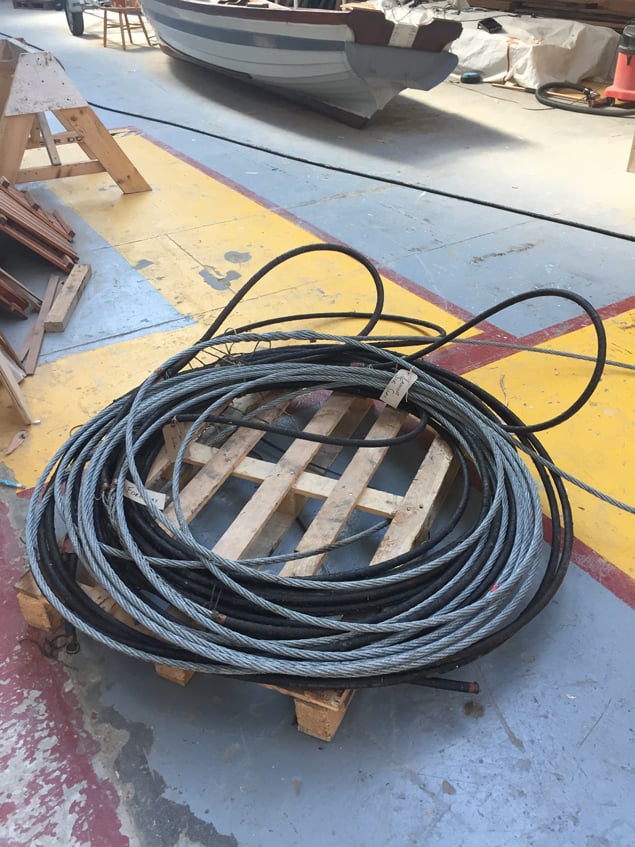 The thick steel wire in its raw state is a daunting sight. Photo: Gary MacMahon
The thick steel wire in its raw state is a daunting sight. Photo: Gary MacMahon
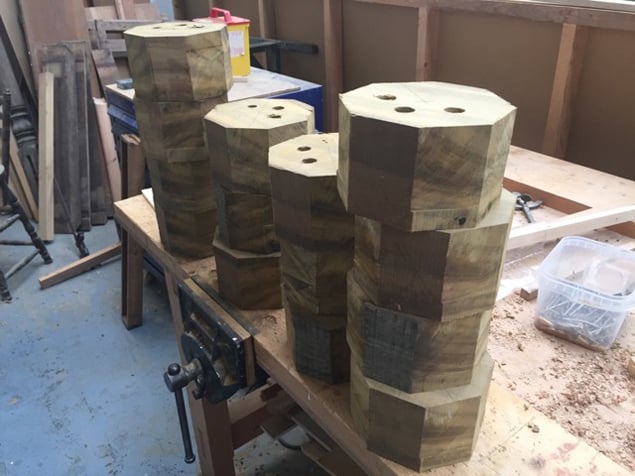 The lower ends of the shrouds will be attached to the chainplates by lanyards rove through deadeyes made from greenheart, seen here at an early stage of the shaping process in Limerick. Photo: Gary MacMahon
The lower ends of the shrouds will be attached to the chainplates by lanyards rove through deadeyes made from greenheart, seen here at an early stage of the shaping process in Limerick. Photo: Gary MacMahon
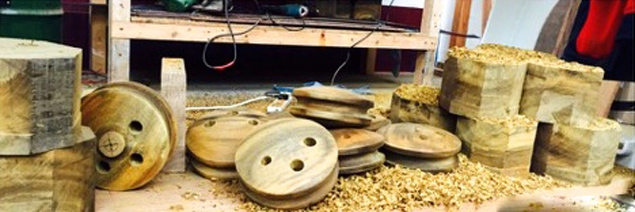 “Series production” of dead-eyes. Photo: Gary MacMahon
“Series production” of dead-eyes. Photo: Gary MacMahon
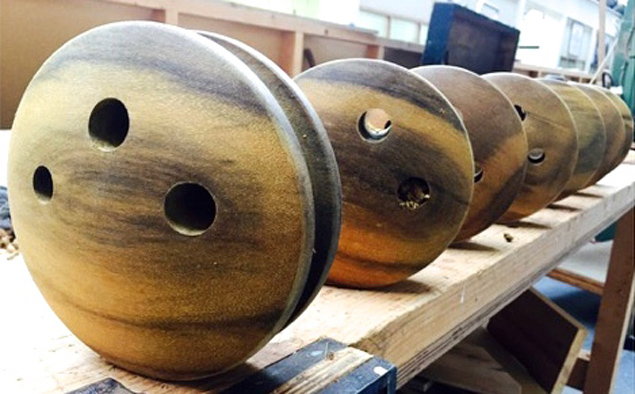 Dead-eyes at the final stage of their creation. All that remains to be done is to shape grooves to allow a fair downward lead for the lanyards. Photo: Gary MacMahon
Dead-eyes at the final stage of their creation. All that remains to be done is to shape grooves to allow a fair downward lead for the lanyards. Photo: Gary MacMahon


























